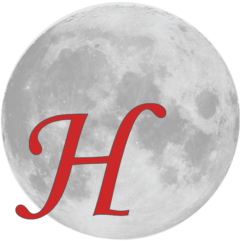Social media has become both a constant irritant and an indispensable part of my life. I don’t remember what I was thinking when I joined Facebook – I may have read somewhere that I had to join social media to “develop a platform.” I now consider Facebook indispensable to networking and keeping abreast of opportunities, while I question its value as a platform. At times the whole Internet, but social media in particular, feels like a bottomless drain on my energy. There’s so much information, so much of it laced with fear, so little of it containing any real substance. It’s the journalistic equivalent of fast food: cheap but unsatisfying, fattening but lacking core nutrients.Sometimes, I just have to stay home and virtually not go anywhere.
But surprisingly, when the specter of having to leave Facebook arose about six months ago, I was panicked. How would I function professionally? How could I get information that can’t be classified as news because it pertains to a relatively small group of people, spread over wide geography? How could I get information that can’t be classified as news because the story develops collaboratively, over the space of a day or two?I don’t know if the reason for my speculating such a drastic move is, ultimately, important. The large social media outlets like Facebook, Tumblr, and Twitter are going to eventually implode as they become huge unwieldy conglomerates. The result will not be an exchange of Reddit for Yahoo or Facebook for Google+, but loosely connected independent sites catering to various specialized, alternative, or marginalized communities. Facebook tried to develop a series of small networks through its “groups,” Google+ has tried to do this in a different way through its “circles,” and Reddit has its “subreddits,” but ultiminately these are starting to collapse through the limits of size and centralized administration.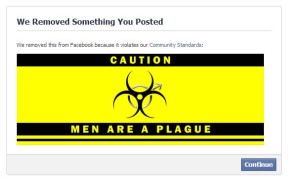
Tag: Pagan Blog Project
Understanding Halloween
October 11, 2013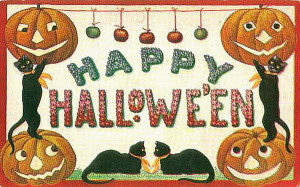 At the risk of preaching to the choir this week, I want to talk about the meaning of Halloween. Over the past few years I have been getting more and more calls-to-action over two issues associated with Halloween as it is commonly celebrated: the adoption of stereotypic American Indian trick-or-treat costumes and the borrowing of sugar skulls from Mexican American Dia de los Muertos ceremonies. While I agree with objections raised to these two practices, I nonetheless find the slant of this activism troubling. By objecting only to offensive elements within the sacrilegious perversion of this holy day, this activism ends up reinforcing the perverted narrative. Conversely, by bringing Halloween back in harmony with its roots, these and other offensive elements are banished.Let’s look at the true meaning of the holiday. Halloween is a shortened version of All Hollows Eve, an ancient Celtic holiday of reverence for ancestors. It is still celebrated as such by Druids and Witches throughout the world. The day is usually celebrated between October 30 and November 2, depending on the religious tradition and the country. (Some Druids mark the full moon closest to November 1.) Many centuries ago the Catholic Church, in order to discourage the Pagan rites, co-opted the holiday as All Souls Day, and within the Catholic Church it retained much of its former purpose of remembering departed souls. All Souls Day has been an important holiday wherever there has been a strong Celtic influence, not only in the “Celtic countries” of the British Isles, but in France, Spain, and even parts of Germany. Because of the Aztec influence, the Mexican holiday retained even more of its original significance while incorporating elements of indigenous Mesoamerican belief.
At the risk of preaching to the choir this week, I want to talk about the meaning of Halloween. Over the past few years I have been getting more and more calls-to-action over two issues associated with Halloween as it is commonly celebrated: the adoption of stereotypic American Indian trick-or-treat costumes and the borrowing of sugar skulls from Mexican American Dia de los Muertos ceremonies. While I agree with objections raised to these two practices, I nonetheless find the slant of this activism troubling. By objecting only to offensive elements within the sacrilegious perversion of this holy day, this activism ends up reinforcing the perverted narrative. Conversely, by bringing Halloween back in harmony with its roots, these and other offensive elements are banished.Let’s look at the true meaning of the holiday. Halloween is a shortened version of All Hollows Eve, an ancient Celtic holiday of reverence for ancestors. It is still celebrated as such by Druids and Witches throughout the world. The day is usually celebrated between October 30 and November 2, depending on the religious tradition and the country. (Some Druids mark the full moon closest to November 1.) Many centuries ago the Catholic Church, in order to discourage the Pagan rites, co-opted the holiday as All Souls Day, and within the Catholic Church it retained much of its former purpose of remembering departed souls. All Souls Day has been an important holiday wherever there has been a strong Celtic influence, not only in the “Celtic countries” of the British Isles, but in France, Spain, and even parts of Germany. Because of the Aztec influence, the Mexican holiday retained even more of its original significance while incorporating elements of indigenous Mesoamerican belief.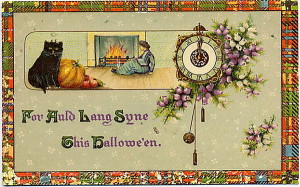
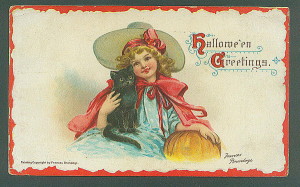 Scary stories have a universal appeal and probably serve some purpose, but in light of what has already been explained the sacrilege of Halloween slasher movies should be obvious. Imagine for a moment the most sacred Christian or Jewish holidays being given an exploitative, sacrilegious theme. What if Easter produced a slew of apocalyptic flesh eating zombie movies, seeing as Jesus rose from the dead? What if Yom Kippur produced stories on the theme of sadomasochism, seeing as it’s the day of atonement? If the very suggestion of such a takeoff offends you, think about the commercial exploitation of Halloween in light of what the night is really about.You can still celebrate Halloween in a respectful way, even if you are not a Witch or a Druid. Explain to children that Halloween is a time of ghosts, and give them the option of dressing as a sad ghost or a wretched ghost or a whimsical ghost. Save the ballerina and astronaut costumes for a different occasion. If you want to have a Halloween gathering, just keep it cheerful and leave the slasher movies and related themes out of the evening. Tarot cards, harmless spells, and other witchy activities are fine, as long as they are not trivialized. If you simply ask your guests to bring a picture of a departed loved one and come prepared to talk a little about this person, you have right there an nonreligious expression of the true meaning of Halloween.
Scary stories have a universal appeal and probably serve some purpose, but in light of what has already been explained the sacrilege of Halloween slasher movies should be obvious. Imagine for a moment the most sacred Christian or Jewish holidays being given an exploitative, sacrilegious theme. What if Easter produced a slew of apocalyptic flesh eating zombie movies, seeing as Jesus rose from the dead? What if Yom Kippur produced stories on the theme of sadomasochism, seeing as it’s the day of atonement? If the very suggestion of such a takeoff offends you, think about the commercial exploitation of Halloween in light of what the night is really about.You can still celebrate Halloween in a respectful way, even if you are not a Witch or a Druid. Explain to children that Halloween is a time of ghosts, and give them the option of dressing as a sad ghost or a wretched ghost or a whimsical ghost. Save the ballerina and astronaut costumes for a different occasion. If you want to have a Halloween gathering, just keep it cheerful and leave the slasher movies and related themes out of the evening. Tarot cards, harmless spells, and other witchy activities are fine, as long as they are not trivialized. If you simply ask your guests to bring a picture of a departed loved one and come prepared to talk a little about this person, you have right there an nonreligious expression of the true meaning of Halloween.
Re-Training Vision: The Three Principles
October 4, 2013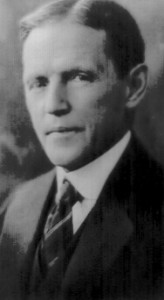
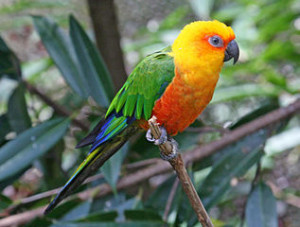
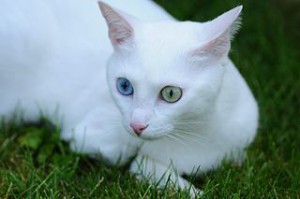
(Review) Tracking and the Art of Seeing: How to Read Animal Tracks & Sign by Paul Rezendes
September 27, 2013![]() Related to the issue of how to see, which is the subject of natural vision, is the idea of what to see or what to look for. Since our visual field is so crowded, we must necessarily be selective in what we take notice of. Yet modern humans have developed an insouciance about the natural environment which reflects a belief that there is nothing important to take notice of.A coyote on his daily trot through highly familiar territory gleans a great deal of information about what has transpired since he last made the rounds. He knows not only what types of animals have passed through, but how long ago they were there, where they came from, where they went, and what they did in that particular spot. True, a lot of the coyote’s information comes from his superior sense of smell, which we cannot hope to emulate, but with our primary tool of perception, our vision, we can also discern these stories. Seeing an animal is a gift, yet recognizing the signs of an animal traversing the vicinity is also valuable information that can lead to future sightings. And identifying the name of the animal is only part of the equation; the signs also point to a story about that animal.
Related to the issue of how to see, which is the subject of natural vision, is the idea of what to see or what to look for. Since our visual field is so crowded, we must necessarily be selective in what we take notice of. Yet modern humans have developed an insouciance about the natural environment which reflects a belief that there is nothing important to take notice of.A coyote on his daily trot through highly familiar territory gleans a great deal of information about what has transpired since he last made the rounds. He knows not only what types of animals have passed through, but how long ago they were there, where they came from, where they went, and what they did in that particular spot. True, a lot of the coyote’s information comes from his superior sense of smell, which we cannot hope to emulate, but with our primary tool of perception, our vision, we can also discern these stories. Seeing an animal is a gift, yet recognizing the signs of an animal traversing the vicinity is also valuable information that can lead to future sightings. And identifying the name of the animal is only part of the equation; the signs also point to a story about that animal.

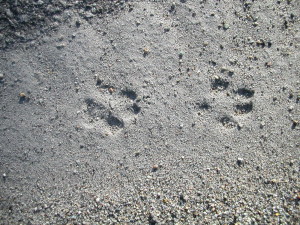
Seeing More Clearly
September 20, 2013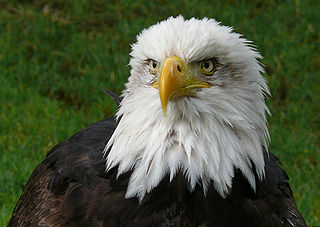
Animal Stories and Spirit Journeys
September 13, 2013![]() Interview on Attune Magazine with Mary Nale and ReeNee Cummins.This interview is about an hour. We talk about some of the basics of animal magic. What is Euro-shamanism? How does it relate to healing? How do I interpret my experiences with animals? Also some discussion of owls, spiders, snakes and alligators.
Interview on Attune Magazine with Mary Nale and ReeNee Cummins.This interview is about an hour. We talk about some of the basics of animal magic. What is Euro-shamanism? How does it relate to healing? How do I interpret my experiences with animals? Also some discussion of owls, spiders, snakes and alligators.
Relearning to See
September 6, 2013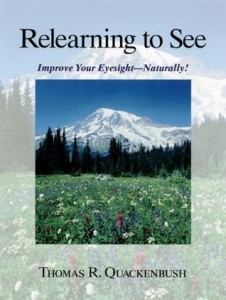 This isn’t so much a review of Thomas R. Quakenbush’s book Relearning to See, considered one of the best books explaining what is called the “Bates Method,” as it is an exploration of how the principles of natural vision have changed my thinking and my life. Although most people will elect to go the route of glasses and surgery to correct vision problems, and a few lucky people have perfect vision without considering the issue, I think these insights have implications beyond correcting eyesight, implications especially for the magical practitioner.I first decided to use natural vision methods over twenty-five years ago, when I was at the Michigan Womyn’s Music Festival. I was camping out at the festival with several thousand women, and I rolled over my glasses in the tent while I was asleep, breaking them beyond repair. I was a day’s drive away from home, and my girlfriend did not know how to drive, so I had no idea how we would be able to get home. I was in a bit of a panic. In the end, some women scrounged up materials and pieced the glasses together so that they could stay on my nose long enough for the drive – but that was the turning point. I saw that my life was hanging by a thread, depending on these implements to interface with the world, and I vowed that I would find a way to emancipate myself from the tyranny of eyeglasses. I had never heard of “natural vision,” and I didn’t know anyone who had successfully thrown away their glasses, but I was determined to be free.Looking back, I can see that it was no coincidence that my commitment to better vision began here, just as it was no coincidence that my vision problems started in my first year of college. That year I began complaining of headaches, and my mother made an appointment for me at the “Vision Clinic,” as it was misnamed. It should have been called the “Adjusts to Poor Vision Clinic.” Sure enough, my eyesight had deteriorated. The explanation given was that I was spending long hours hunched over books, often under the glaring light of the library, and this was putting a strain on my eyes. I don’t dispute this explanation, and William H. Bates himself says that eyestrain is a big culprit in poor vision, but this is a surface explanation, like saying your car got dented because something hit it. What happened?College is a period of indoctrination as much as a period of learning. The biases, prejudices and imperatives of Western civilization bombard the young mind, as the institution struggles against itself to teach that mind how to think while dictating to it what to think. Especially for a woman, the incongruities are fierce. I took what amounted to a minor in English literature, and in all those classes read exactly one book written by a woman. The thing that bothers me most about that is that I didn’t “see” it. I majored in economics, and it was never mentioned that most wealth is in the hands of men and poverty disproportionately affects women. What bothers me now is that I didn’t “see” it. For a woman higher education is a period of great strain, one she survives by turning a blind eye, or at least a myopic one, to what is going on.Since I had not been inured to wearing glasses at a young age, of course I hated them, and I only wore them when reading a textbook – something that should have been instructive. When I graduated from college and began working for a large corporation, I began needing higher prescription lenses to read it all, and eventually needed glasses even to drive.Michigan provoked the turn around. This was in the earlier days of the festival, before the rise of organized attacks that changed the timbre of the music. I had to never been in a crowd of so many women. I had to never been in a large public gathering where men were completely absent. I realized with a shock that for many years, perhaps most of my life, I had lived in heightened alert against the threat of rape, both in and outside of my house. I had never reflected on this, never even noticed it, but the absence was startling. My body was conditioned to tighten at the sound of a low voice or a rustle of leaves – but then I would remember, “I am safe here.” This is what the early days of Michigan were like.It was also at Michigan that I met my first witch, or at least the first witch who would talk to me. I had imposed myself once on a woman who was pointed out to me at a local coffee house, who admitted to being a witch. I asked her where I could learn how to fly on a broom, and she brushed me off. But at Michigan there were lots of witches. I took a tarot class taught by Daughters of the Moon designer Fiona Morgan. I remember nothing about the class except that I felt excited to catch a glimpse of some thing totally new. Something was shifting in me. Looking back I see that my fuzzy eyesight was the distortions of patriarchy and my eyeglasses were the coping mechanism that allowed me to function. I left Michigan determined not to throw away my coping mechanism, but to dispense with the need for it altogether. The clearer vision that ensued allowed me to penetrate the occult realms.As often happens when I write a blog post, I have discovered that I have more to say than I thought I did. I will continue the topic of acquiring clear vision in another post.
This isn’t so much a review of Thomas R. Quakenbush’s book Relearning to See, considered one of the best books explaining what is called the “Bates Method,” as it is an exploration of how the principles of natural vision have changed my thinking and my life. Although most people will elect to go the route of glasses and surgery to correct vision problems, and a few lucky people have perfect vision without considering the issue, I think these insights have implications beyond correcting eyesight, implications especially for the magical practitioner.I first decided to use natural vision methods over twenty-five years ago, when I was at the Michigan Womyn’s Music Festival. I was camping out at the festival with several thousand women, and I rolled over my glasses in the tent while I was asleep, breaking them beyond repair. I was a day’s drive away from home, and my girlfriend did not know how to drive, so I had no idea how we would be able to get home. I was in a bit of a panic. In the end, some women scrounged up materials and pieced the glasses together so that they could stay on my nose long enough for the drive – but that was the turning point. I saw that my life was hanging by a thread, depending on these implements to interface with the world, and I vowed that I would find a way to emancipate myself from the tyranny of eyeglasses. I had never heard of “natural vision,” and I didn’t know anyone who had successfully thrown away their glasses, but I was determined to be free.Looking back, I can see that it was no coincidence that my commitment to better vision began here, just as it was no coincidence that my vision problems started in my first year of college. That year I began complaining of headaches, and my mother made an appointment for me at the “Vision Clinic,” as it was misnamed. It should have been called the “Adjusts to Poor Vision Clinic.” Sure enough, my eyesight had deteriorated. The explanation given was that I was spending long hours hunched over books, often under the glaring light of the library, and this was putting a strain on my eyes. I don’t dispute this explanation, and William H. Bates himself says that eyestrain is a big culprit in poor vision, but this is a surface explanation, like saying your car got dented because something hit it. What happened?College is a period of indoctrination as much as a period of learning. The biases, prejudices and imperatives of Western civilization bombard the young mind, as the institution struggles against itself to teach that mind how to think while dictating to it what to think. Especially for a woman, the incongruities are fierce. I took what amounted to a minor in English literature, and in all those classes read exactly one book written by a woman. The thing that bothers me most about that is that I didn’t “see” it. I majored in economics, and it was never mentioned that most wealth is in the hands of men and poverty disproportionately affects women. What bothers me now is that I didn’t “see” it. For a woman higher education is a period of great strain, one she survives by turning a blind eye, or at least a myopic one, to what is going on.Since I had not been inured to wearing glasses at a young age, of course I hated them, and I only wore them when reading a textbook – something that should have been instructive. When I graduated from college and began working for a large corporation, I began needing higher prescription lenses to read it all, and eventually needed glasses even to drive.Michigan provoked the turn around. This was in the earlier days of the festival, before the rise of organized attacks that changed the timbre of the music. I had to never been in a crowd of so many women. I had to never been in a large public gathering where men were completely absent. I realized with a shock that for many years, perhaps most of my life, I had lived in heightened alert against the threat of rape, both in and outside of my house. I had never reflected on this, never even noticed it, but the absence was startling. My body was conditioned to tighten at the sound of a low voice or a rustle of leaves – but then I would remember, “I am safe here.” This is what the early days of Michigan were like.It was also at Michigan that I met my first witch, or at least the first witch who would talk to me. I had imposed myself once on a woman who was pointed out to me at a local coffee house, who admitted to being a witch. I asked her where I could learn how to fly on a broom, and she brushed me off. But at Michigan there were lots of witches. I took a tarot class taught by Daughters of the Moon designer Fiona Morgan. I remember nothing about the class except that I felt excited to catch a glimpse of some thing totally new. Something was shifting in me. Looking back I see that my fuzzy eyesight was the distortions of patriarchy and my eyeglasses were the coping mechanism that allowed me to function. I left Michigan determined not to throw away my coping mechanism, but to dispense with the need for it altogether. The clearer vision that ensued allowed me to penetrate the occult realms.As often happens when I write a blog post, I have discovered that I have more to say than I thought I did. I will continue the topic of acquiring clear vision in another post.
Riddles
August 30, 2013What has been around billions of years, yet is less than a month old?
Back when I was doing child psychotherapy, I liked to read a “Mickey Mouse Joke Book” with a child I was getting to know. It contained a lot of riddles and silly puns that the children usually enjoyed. I would pretend not to “get” the joke and let the child explain it to me, and in this way I discovered something about the child’s cognitive development.Riddles are an effective teaching tool because they thoroughly engage the mind. Most advanced spiritual paths and systems of magic employ riddles as well as puns and metaphors. They aid with memory and concentration and enliven understanding.
Recently I acquired a book on Home Games and Parties, first published in 1891, that has some interesting flower riddles. What flower or plant:Is a Roman numeral?Is a very gay and ferocious animal?Is its own doctor?Has fragrant letters?Is a sunny physician?Flies in the air but is part of a boot?Another form of the riddle is the story that on the surface makes no sense. When Cormac mac Airt travels to the Land of Promise, he meets a party that is roasting a pig without any visible source of flame. The group tells him that a quarter of the pig will be cooked for every truth that is told. The anecdote naturally sets the mind to ponder on the nature of truth.Often the riddle is in the form of a poem, such as the famous Song of Amergin, which begins in the Robert Graves translationI am a stag: of seven tines,I am a flood: across a plain,I am a wind: on a deep lake,I am a tear: the Sun lets fall,I am a hawk: above the cliff,I am a thorn: beneath the nail,I am a wonder: among flowers,I am a wizard: who but ISets the cool head aflame with smoke?Riddles can also be nonverbal. The most famous visual riddle is the “Three Hares” picture. (Hint: Look at the ears.)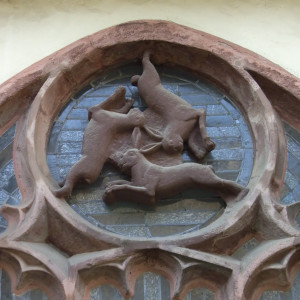
Review: Occult America by Mitch Horowitz
August 16, 2013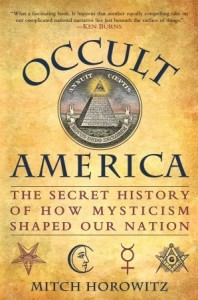 Occult America could have more accurately been titled Occult Roots of the New Age. The focus of this book is on identifying progenitors of phenomena familiar to the mainstream, such as Ouija boards and the daily newspaper horoscope, rather than linking true twenty-first century occult to any historical American perspective. The expected cast of characters appears, including Joseph Smith, Mme. Blavatsky and Edgar Cayce, along with less familiar names such as mail order mystic Frank B. Robinson or scholar of ancient sciences Manly P. Hall.The foundation of the book is an in-depth look at the Burned-Over District, a swathe across New York State from Albany to Buffalo that was a magnet for unorthodox religious study for about 100 years, starting in the late eighteenth century. So many prophets, mystics, spiritualists, and firebrand preachers traveled through this area that it was said to be “burned over” with religious fervor. I recently made a brief foray into the Burned-Over District while publicizing my own book and I will probably at some point devote an entire post to the history of this fascinating area.Occult America also explores the occult influence in government, and it seems in this regard there is always something new to learn. Many people are aware that some of the Founding Fathers were Freemasons, and that Ronald Reagan took the advice of his astrological advisors very seriously, but the occult influence on the Lincoln and Roosevelt White House is less well known.Horowitz does not shrink from describing the unsavory side of spiritualist movements, especially the pro-fascist Silver Shirts of the Depression and World War II era. He gives a balanced view of Edgar Cayce, acknowledging the typically enlightened yet at times prejudiced nature of the material that came through him.In a chapter on the African American influence on New Age, Horowitz mentions the practice of hoodoo and nearly veers into actual discussion of the occult, but he pulls himself back in time. A person who can walk into an occult store and understand the uses of the various herbs and implements sold there might very well wonder what, if anything, this book has to do with them. The magical legacies of the Pennsylvania Dutch, or New Orleans Voodoo, or Southwestern curanderos are not discussed. The role of America in the popularization of witchcraft is dealt with in one dismissive page. The Goddess Movement is ignored completely. Horowitz is concerned with how the occult shaped conservative and mainstream America. The value of this book for someone with a more sophisticated understanding of the occult is that it shows some common roots to very disparate twenty-first century spiritual philosophies. It filled in a lot of gaps in my knowledge. Though Witches, Pentecostals and New Agers see themselves as very different, they seem to have branched from the same tree.
Occult America could have more accurately been titled Occult Roots of the New Age. The focus of this book is on identifying progenitors of phenomena familiar to the mainstream, such as Ouija boards and the daily newspaper horoscope, rather than linking true twenty-first century occult to any historical American perspective. The expected cast of characters appears, including Joseph Smith, Mme. Blavatsky and Edgar Cayce, along with less familiar names such as mail order mystic Frank B. Robinson or scholar of ancient sciences Manly P. Hall.The foundation of the book is an in-depth look at the Burned-Over District, a swathe across New York State from Albany to Buffalo that was a magnet for unorthodox religious study for about 100 years, starting in the late eighteenth century. So many prophets, mystics, spiritualists, and firebrand preachers traveled through this area that it was said to be “burned over” with religious fervor. I recently made a brief foray into the Burned-Over District while publicizing my own book and I will probably at some point devote an entire post to the history of this fascinating area.Occult America also explores the occult influence in government, and it seems in this regard there is always something new to learn. Many people are aware that some of the Founding Fathers were Freemasons, and that Ronald Reagan took the advice of his astrological advisors very seriously, but the occult influence on the Lincoln and Roosevelt White House is less well known.Horowitz does not shrink from describing the unsavory side of spiritualist movements, especially the pro-fascist Silver Shirts of the Depression and World War II era. He gives a balanced view of Edgar Cayce, acknowledging the typically enlightened yet at times prejudiced nature of the material that came through him.In a chapter on the African American influence on New Age, Horowitz mentions the practice of hoodoo and nearly veers into actual discussion of the occult, but he pulls himself back in time. A person who can walk into an occult store and understand the uses of the various herbs and implements sold there might very well wonder what, if anything, this book has to do with them. The magical legacies of the Pennsylvania Dutch, or New Orleans Voodoo, or Southwestern curanderos are not discussed. The role of America in the popularization of witchcraft is dealt with in one dismissive page. The Goddess Movement is ignored completely. Horowitz is concerned with how the occult shaped conservative and mainstream America. The value of this book for someone with a more sophisticated understanding of the occult is that it shows some common roots to very disparate twenty-first century spiritual philosophies. It filled in a lot of gaps in my knowledge. Though Witches, Pentecostals and New Agers see themselves as very different, they seem to have branched from the same tree.
Review: Paradise of the Birders
August 9, 2013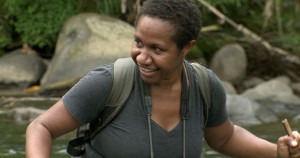
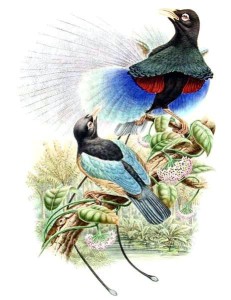
Watch Blue Bird of Paradise on PBS. See more from Nature.
